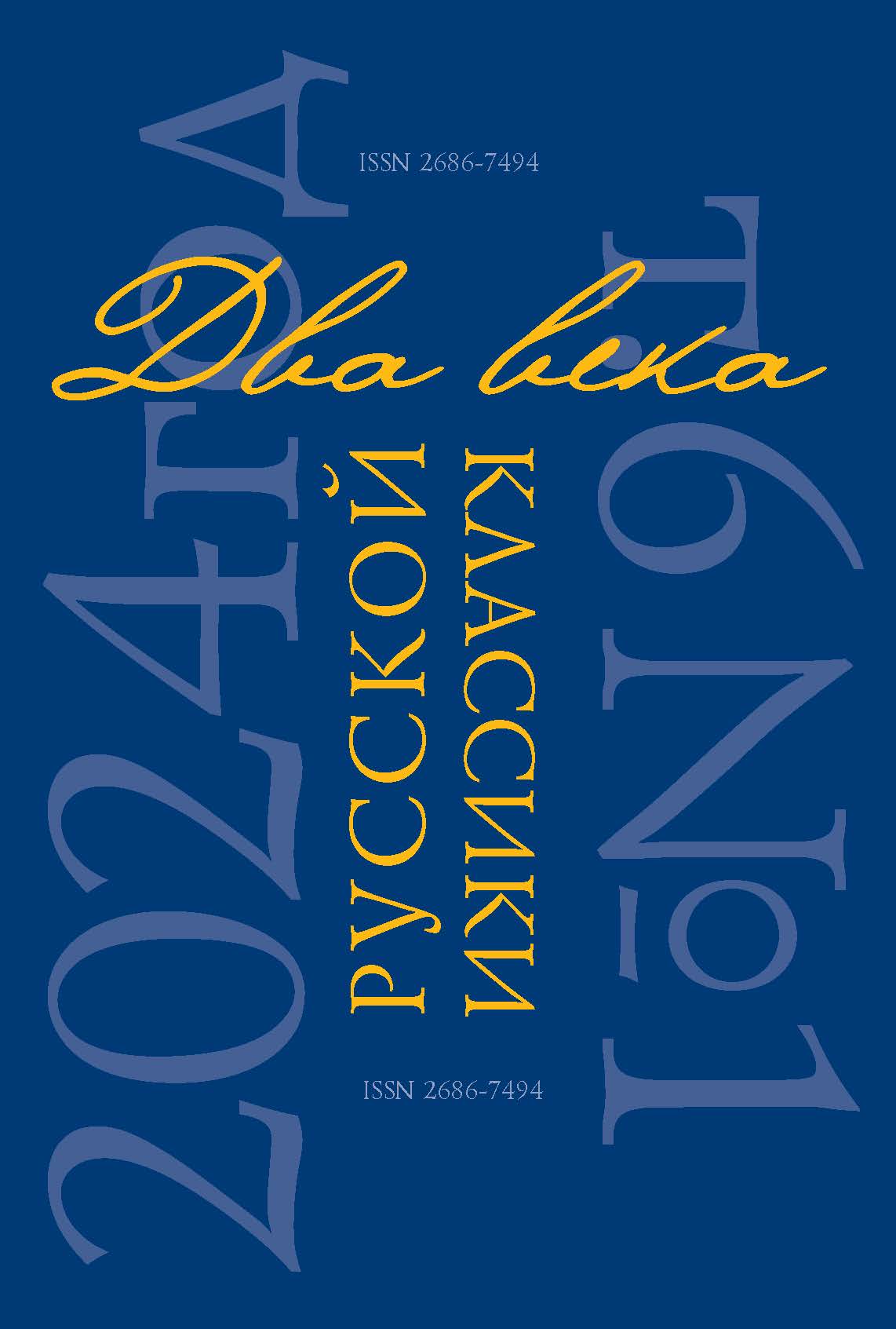Abstract: The article focuses on the reception of Russian classical literature translations in the English-speaking culture. The research was carried out on the material of three existing translations of ‘Forest and Steppe’ by both Russian and English translators published in 1895, 1955 and 1967. The main objective of the research is to determine the difficulties translators of Russian literature of the 19th century could face in the case of Turgenev's epigraph to ‘Forest and Steppe’. The tasks of the study were to define and describe the peculiarities of conveying the epigraph’s vocabulary, to outline the group of the most important keywords of the text, to recognize and describe discrepancies in their translation, to indicate why the chosen option is possible or impossible in the translation of Turgenev’s text. The study showed that Turgenev's worldview was formed under the influence of the culture of ‘rhetorical word’, and the epigraph to ‘Forest and Steppe’ proves it. The epigraph consists of a chain of symbolic images that add up to a single picture. The writer's worldview determined the style of the epigraph, the choice of vocabulary, and the composition of the text. For translators, the main difficulty at the lexical level lies in the fact that they often choose words that carry a greater emotional load than Turgenev’s vocabulary, and also introduce tropes, absent in the original, into translations. On the one hand, the translations create a realistic picture, in contrast to Turgenev’s symbolic landscape, on the other hand, the atmosphere of the text, reflecting the personality of the writer, is destroyed. The translations mirror profound changes that took place in the 19th–20th centuries in the European worldview.
References
Akimova, M. S. “ʽDriakhleiut parki vekovye’: obraz parka v russkoi poezii XIX – nachala XX vv.” [“ʽAge-old Parks are Decreasing’: the Image of a Park in Russian Poetry of the 19th – early 20th centuries.”]. Studia Litterarum, vol. 5, no 1, 2020, pp. 178–193. DOI: 10.22455/2500-4247-2020-5-1-178-193 (In Russ.)
Bogdanova, O. A. “ʽUsadebnaia kul'tura’ v russkoi literature XIX – nachala XX veka. Sotsiokul'turnyi aspect” [“ʽEstate Culture’ in Russian Literature of the 19th – early 20th century. Sociocultural aspect”]. Novyi filologicheskii vestnik, no. 2, 2010, pp. 14–25. (In Russ.)
Voronina, O. N., and Kolosova, E. V. “Rasteniia russkoi usad'by” [“Plants of the Russian Estate”]. Ekologiia kul'tury — ekologiia nravstvennosti. Russkaia usad'ba: mir, mif i mig deistvitel'nosti: sbornik dokladov [The Ecology of Culture is the Ecology of Morality. Russian Estate: World, Myth and Moment of Reality: Collection of Reports]. Nizhny Novgorod, 2017, pp. 253–257. (In Russ.)
Mininzon, I. L. “Evoliutsiia gorodskoi usad'by Nizhnego Novgoroda za poslednie 100 let: vzgliad botanika” [“Evolution of a City Estate in Nizhny Novgorod over the Past 100 Years: a Botanist's View”]. Ekologiia kul'tury — ekologiia nravstvennosti. Russkaia usad'ba: mir, mif i mig deistvitel'nosti: sbornik dokladov. [The Ecology of Culture is the Ecology of Morality. Russian Estate: World, Myth and Moment of Reality: Collection of Reports]. Nizhnii Novgorod, 2017, pp. 263–265. (In Russ.)
Mikhailov, A. V. Izbrannoe. Zavershenie ritoricheskoi epokhi [Selected Works. The End of the Rhetorical Era]. St. Petersburg, Sankt-Peterburgskii gosudarstvennyi universitet Publ., 2007. 480 p. (In Russ.)
Tokareva, N. A. “Tema russkoi usad'by v tvorchestve nizhegorodskogo poeta A. V. Zvenigorodskogo” [“The Theme of the Russian Estate in the Works of the Nizhny Novgorod Poet A. V. Zvenigorodsky”]. Ekologiia kul'tury — ekologiia nravstvennosti. Russkaia usad'ba: mir, mif i mig deistvitel'nosti: sbornik dokladov [The Ecology of Culture is the Ecology of Morality. Russian Estate: World, Myth and Moment of Reality: Collection of Reports]. Nizhnii Novgorod, 2017, pp. 283–291. (In Russ.)
Constance, Garnett. Tr. Ivan Turgenev. A Sportsman's Sketches Works of Ivan Turgenev. v. II. https://www.gutenberg.org/files/8744/8744-h/8744-h.htm (Accessed 26 November 2020).
Ingram, John. Flora Symbolica, or The Language and Sentiment of Flowers. London, Frederick Warne & Co., 1882. 368 p. (In English)
Ledkovsky, Marina. A Linguistic Bridge to Orthodoxy. In Memoriam Isabel Florence Hapgood. http://anglicanhistory.org/women/hapgood/ledkovsky.pdf (Accessed 26 November 2020). (In English)
Tyas, Robert. The Language of Flowers, or Floral Emblems. London, George Rutledge and Sons, 1869. 224 p. (In English)
Waddington, Patruck. Turgenev and England. London and Basingstoke, Macmillan, 1980. 382 р. (In English)









